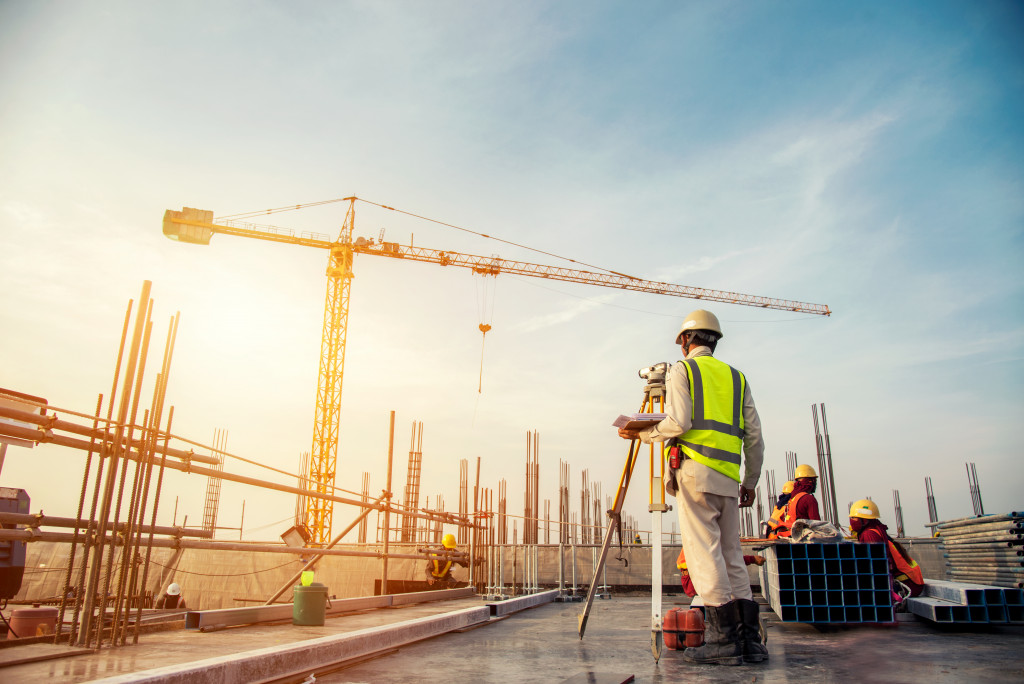- Establish and enforce strict safety rules in the workplace to protect workers and visitors.
- Provide safety gear (e.g., hard hats, safety glasses, and earplugs) for hazardous environments.
- Conduct regular work site inspections to identify potential hazards or violations.
- Ensure that all workers receive adequate training and supervision.
- Allocate specific zones for each task to reduce confusion and ensure safety.
January 2023 saw the weakest monthly growth in construction output since June 2022, with a drop of 1.7 percent from December’s value. This is also the lowest figure recorded since February 2022, resulting mainly from a significant 4 percent decline in new work, partly offset by an uplift of 2 percent for repair and maintenance activities that same month.
Constructing a new building is an exciting project for business owners and entrepreneurs. However, it can also be a serious undertaking, as construction sites can be dangerous. Workers and visitors can be exposed to various hazards, including falls, slips, trips, and heavy machinery accidents. As a business owner or entrepreneur, you must ensure that you take all the necessary steps to protect everyone who visits or works at your construction site. This article will provide some useful tips to ensure the safety of your construction site.

Enforce Strict Safety Rules
Every work site should have strict safety rules that everyone must follow. These rules need to be posted and visible to everyone. Everyone should enforce the rules, from the CEO to the day laborers. Regular meetings should be held to remind everyone of the safety regulations.
Safety Gear
Safety gear, such as hard hats, safety glasses, and earplugs, must be provided to workers in hazardous environments. All equipment should also be regularly checked and maintained for safe operation.
Regular Inspections
The work site should be inspected regularly for safety violations or potential hazards. Any violations should be reported immediately, and corrective action should be taken.
Adequate Training
Adequate training is essential to ensure that all workers understand the dangers of the job site and know how to perform their work safely. Training should cover the proper use of equipment, handling hazardous materials, fall prevention, and other essential safety practices. Training should be conducted regularly, with refresher courses as needed.
Supervisor Training
Supervisors should also conduct frequent inspections to ensure workers utilize the safety measures they learned in training. Finally, employers should provide one-on-one instruction where necessary and make sure all questions from workers are addressed promptly and accurately. Providing adequate training and supervision will ensure that workers are safeguarded while working on the job site.
Employee Certification
The company should also ensure employees are certified in their roles and responsibilities. This can be done by conducting safety certifications, such as OSHA 10-Hour training for construction workers or HazMat certification for workers handling hazardous materials. Similarly, the company should ensure the workers of the contractor have passed a certified CITB test to ensure they have the qualifications and training to work in construction.
Use Proper Equipment
Using the proper equipment, including personal protective equipment (PPE) such as hard hats, safety glasses, steel-toe boots, and gloves, is essential. Strive to buy high-quality equipment that meets or exceeds safety regulations because cheaper equipment may be hazardous or unreliable. Keep all equipment in good repair, regularly inspecting it for any signs of damage or wear. Ensure that all workers are properly trained on how to use any necessary equipment.
Emergency Response Plan
Construction companies should also have an emergency response plan in place. In the event of a serious injury, everyone needs to know what to do and who is responsible for taking action. All workers should be aware of their roles and responsibilities in these situations and the proper steps to take before, during, and after emergencies.

Keep the Site Clean and Organized
A messy and cluttered job site is a recipe for disaster, as it can lead to trips, slips, and falls. Keep the site clean and organized and require workers to keep up with their cleaning duties. Train workers to put tools away correctly and to use a proper storage area so nothing is left outside, potentially causing accidents.
Specific Zones
If the job site is big enough, allocate specific zones for each task to reduce confusion and ensure everyone knows where things should go. This will help prevent unnecessary clutter and make it easier for workers to find what they need quickly. Regularly inspect the site to identify any unsafe conditions or hazards and take corrective action immediately.
Ensuring safety at a construction site is everyone’s responsibility, from the CEO to the day laborers. Business owners and entrepreneurs should follow these tips to ensure that everyone who visits or works at the construction site is safe. These tips include enforcing strict safety rules, providing adequate training, using the proper equipment, and keeping the construction site clean and organized. Doing so can avoid accidents and incidents that can ruin your project and harm your workers. Safety first is the rule for construction sites; don’t compromise it.

